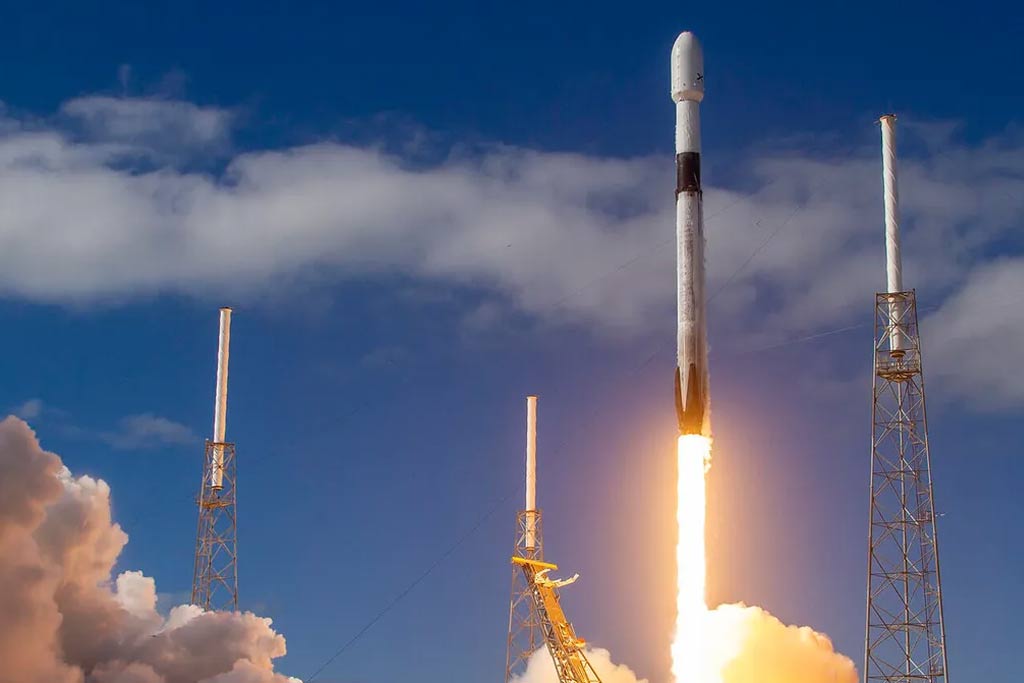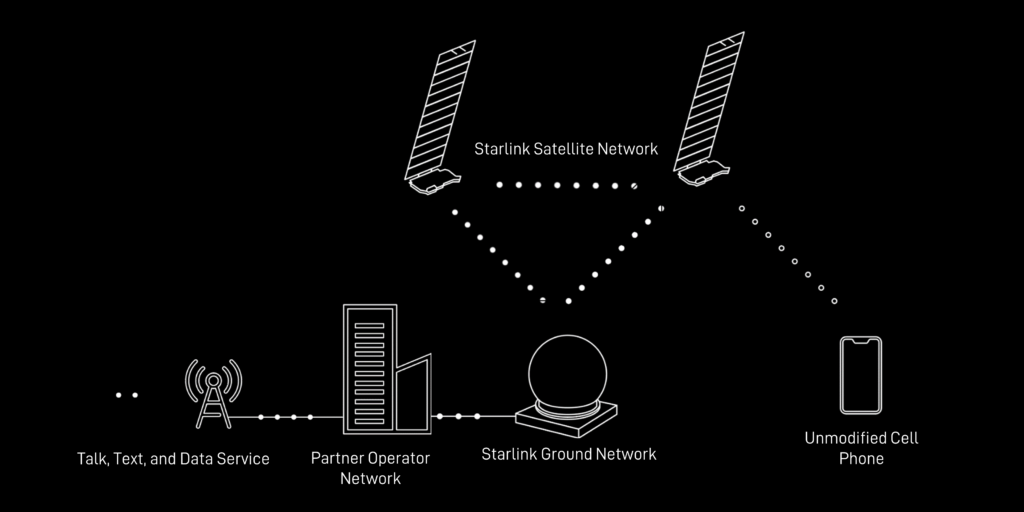Earlier this month from Space Launch Complex 4 East (SLC-4E) at Vandenberg Space Force Base in California, SpaceX launched its Falcon 9 rocket containing the first batch of Starlink satellites with Direct-To-Cell capabilities. Sounds fancy. So what is it anyway?
Starlink Direct to Cell is a service that enables direct communication between satellites and mobile phones without the need for additional equipment, such as the Starlink antenna kit. It uses a constellation of low-Earth orbit satellites that act as small cell towers in space. The satellites will be able to communicate with unmodified cell phones (4G LTE-compatible), as well as ground stations and user terminals, which are part of the Starlink broadband service.
This is a significant milestone for the space technology company, and mobile network operators alike. Previous phone services required a stand-alone device specifically built for satellite connectivity, not to mention the cost. Satellite phones with prepaid SIM cards can run into the thousands.
The six @Starlink satellites on this mission with Direct to Cell capability will further global connectivity and help to eliminate dead zones → https://t.co/FgiJ7LOYdK pic.twitter.com/zFy7SrpsYs
— SpaceX (@SpaceX) January 3, 2024
When Direct-to-Cell satellites are fully operational, users worldwide can enjoy ubiquitous access to voice messages, video, and data in locations where it was previously impossible. Cellular connectivity will be possible wherever a clear view of the sky is available. No changes to existing hardware on mobile devices will be required, providing seamless global access at a fraction of the cost. Direct to Cell is a joint project between SpaceX and T-Mobile US, as well as six other international partners (Rogers in Canada, KDDI in Japan, Optus in Australia, One NZ in New Zealand, Salt in Switzerland, and Entel in Chile and Peru). T-Mobile will begin to field test devices on the service this month.
According to the Starlink website, satellites with Direct-to-Cell capability have an advanced eNodeB modem onboard that acts like a cellphone tower in space, allowing network integration similar to a standard roaming partner.
Currently the service only supports text messaging, however voice and data coverage will be arriving in 2025 along with support for IoT services (internet of things). Read about the T-Mobile partnership here.
Along with the six direct-to-cell Starlink satellites, SpaceX launched an additional 15 Starlink V2 Mini satellites, which will enhance the functionality of the existing low earth orbit group which provides high-speed broadband access.
SpaceX CEO Elon Musk broadcasted the launch on his X feed on January 2, 2024, while also addressing the current limitations of the technology. “While this is a great solution for locations with no cellular connectivity, it is not meaningfully competitive with existing terrestrial cellular networks.”
First launch of Starlink Direct-to-Phone satelliteshttps://t.co/Bamfpvlioz
— Elon Musk (@elonmusk) January 3, 2024
Starlink Direct to Cell is a groundbreaking innovation that promises to revolutionize the wireless industry and bring connectivity to everyone, everywhere.
SpaceX, short for Space Exploration Technologies Corp., is a pioneering American aerospace manufacturer and space transport services company. Founded by Elon Musk in 2002, SpaceX aims to revolutionize space technology with the ultimate goal of enabling humans to live on other planets, particularly Mars.
The company is renowned for its ambitious endeavors in space exploration, including the development and launch of the Falcon 1, Falcon 9, and Falcon Heavy rockets, as well as the Dragon spacecraft series. SpaceX has achieved several historic milestones in the aerospace industry, such as the first privately-funded spacecraft to reach orbit, the first privately-funded spacecraft to dock with the International Space Station (ISS), and the first successful landing of a reusable orbital rocket.
Moreover, SpaceX is actively working on the Starship spacecraft, envisioned as a fully reusable spacecraft designed for crewed missions to the Moon, Mars, and beyond. The company’s innovative approach to space travel, coupled with its emphasis on reusability and cost-efficiency, has significantly disrupted the traditional space industry landscape, making space exploration more accessible and economically viable.
For more information about SpaceX Starlink, and communication, read some of illumy’s other posts below:
Starlink VOIP Setup: Your guide to dialing through the sky
Starlink + VoIP: 3 configuration tips for high-quality calls
Remote Working from an RV: The Future of Connectivity on the Move



